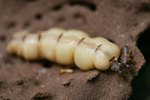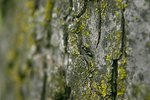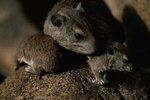Coniferous forests can be best defined as forests made up of mostly cone-bearing, needle-leaved or scale-leaved evergreen trees. This type of forest can be found in many different parts of the world, and often includes trees such as pine, spruce, fir and other softwoods. People in these areas are able to find many types of dominating coniferous forest insects, with some species even able to cause harm to trees and vegetation.
Western Spruce Budworm
In coniferous forests in western North America, the western spruce budworm is considered the insect that dominates the forests and causes the most damage. They can be found in the Pacific Northwest including British Columbia, all the way to the Rocky Mountain regions of Arizona, New Mexico and Colorado. Once mature, western spruce budworm are 1 to 1 ¼ inches long, have tan or light brown heads and have olive or reddish brown bodies. They will live on any number of fir, spruce and pine trees. This species of insect will damage the foliage, cones and seeds of trees by feeding on them.
Bark Beetles
Bark beetles are another insect that can dominate coniferous forests in North America. Bark beetles are common pests to conifer trees; more than 600 different species live in the U.S. and Canada. Damages from bark beetles have spread from the coniferous forests of Alaska to the pine forests of Colorado, Arizona, New Mexico and South Dakota. Bark beetles are small and hard insects that are about the size of a grain of rice. They are dark red, brown or black in color. This species of insect has very strong jaws for chewing, and little holes will start to appear in bark where they have been feeding.
Weevils
Weevils are commonly-seen insects in pine forests across the U.S. and Canada. The white pine weevil has caused significant damage to forest pine trees in the eastern U.S. Weevil attacks can cause four different types of damage to occur to conifer forest trees, including stem deformation, tree mortality, growth reduction and increasing susceptibility to wood-destroying insects. The adults are brown and about ¼ of an inch long. The white pine weevil will be covered in white or tan scales, but other weevils that damage pine trees look very similar.
Tussock Moths
Tussock moths are insects native to the mixed-conifer forests of western North America. They normally go unnoticed and cause little harm to trees, but that changes during tussock moth outbreaks. During outbreaks, the larvae of tussock moths will consume almost all of the foliage of trees in an affected area. They will feed on the needles of fir trees, and visitors to an affected area will notice numerous larvae hanging down from silk cocoons on the trees. Tussock moths are small gray or brown moths, and their larvae are very hairy and about an inch in length.
References
- U.S. Department of Agriculture Forest Service; Western Spruce Budworm; David Fellin and Jerald Dewey
- University of California; Bark Beetles; 2008
- USDA Forest Service: Western Bark Beetle Research Group
- U.S.D.A Forest Service; White Pine Weevil; Abdul Hamid, Thomas O'Dell, and Steven Katovich
- U.S.D.A Forest Service: Douglas-fir Tussock Moth Outbreaks
Photo Credits
-
Jupiterimages/Photos.com/Getty Images





